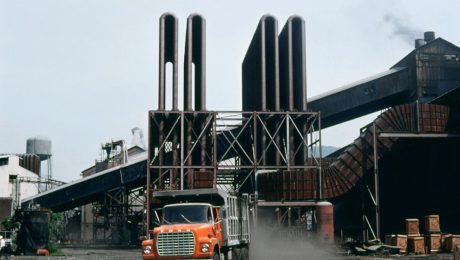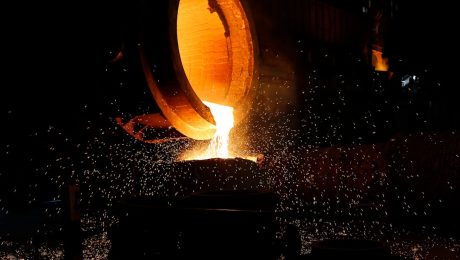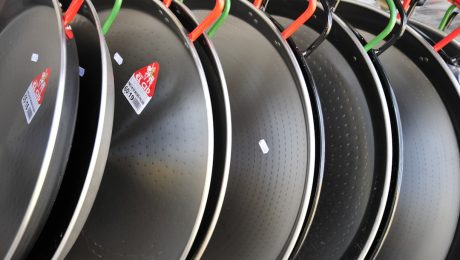GloballSteel stands as a prominent player in the global steel industry, offering a diverse and extensive portfolio of steel products catering to a wide range of sectors. This detailed overview explores the key components of their product line, highlighting their quality, applications, and the innovative solutions they provide to clients worldwide.
Structural Steel: The Backbone of Construction and Infrastructure
GloballSteel’s structural steel range forms the foundation of their offerings. This segment includes a vast array of products designed for heavy-duty applications in construction, infrastructure projects, and industrial facilities. These products are rigorously tested to meet and exceed international quality standards, ensuring durability, strength, and longevity. Specific products within this category include:
- Wide Flange Beams (W-beams): Used extensively in building frameworks, bridges, and high-rise structures, known for their high load-bearing capacity.
- H-beams (I-beams): Versatile and cost-effective, ideal for various applications requiring high strength and stiffness.
- Channels and Angles: Used as supporting members in various structures, offering strength and stability.
- Plates and Sheets: Used for cladding, flooring, and other structural components.
GloballSteel ensures meticulous quality control throughout the production process, from raw material sourcing to final product inspection, guaranteeing consistent performance and reliability for every project.
Specialty Steels: Tailored Solutions for Demanding Applications
Beyond standard structural steel, GloballSteel offers a comprehensive range of specialty steels engineered to meet the unique demands of specific industries. These specialized materials possess enhanced properties such as increased strength, corrosion resistance, or heat resistance, making them suitable for demanding environments and applications. Examples include:
- Stainless Steel: Known for its exceptional corrosion resistance, ideal for applications in food processing, chemical plants, and marine environments.
- High-Strength Low-Alloy (HSLA) Steel: Offers superior strength-to-weight ratio, making it ideal for lightweight construction and reducing material costs.
- Weathering Steel (Corten Steel): Develops a protective patina over time, reducing the need for painting and maintenance.
- Tool Steel: Possesses exceptional hardness and wear resistance, making it perfect for the manufacturing of cutting tools and dies.
GloballSteel’s commitment to innovation ensures that their specialty steel range constantly evolves to meet the ever-changing demands of modern industries.
Steel Processing and Fabrication Services: Value-Added Solutions
GloballSteel doesn’t just supply raw steel materials; they offer comprehensive processing and fabrication services to add value and streamline the project workflow for their clients. These services include:
- Cutting and Shaping: Precise cutting and shaping of steel components to precise specifications.
- Welding and Assembly: Expert welding services to create complex steel structures and assemblies.
- Surface Treatment: Various surface treatments like painting, galvanizing, and powder coating to enhance durability and aesthetics.
- Project Management: Dedicated project managers oversee every stage of the process, ensuring timely delivery and quality control.
This integrated approach ensures that clients receive complete solutions, from material selection to final installation, minimizing project delays and maximizing efficiency.
Global Reach and Supply Chain Management: Ensuring Timely Delivery
GloballSteel’s global presence is a key strength, allowing them to efficiently manage their supply chain and ensure timely delivery of materials to clients worldwide. Their strategic partnerships with logistics providers and a robust global network guarantee prompt and reliable service, regardless of location. This commitment to efficient logistics minimizes project downtime and reduces overall project costs.
Their sophisticated inventory management systems ensure optimal stock levels, reducing lead times and mitigating the risk of material shortages. This proactive approach contributes to smoother project execution and strengthens customer confidence.
Sustainability and Environmental Responsibility: A Commitment to a Greener Future
GloballSteel recognizes the importance of environmental sustainability and actively incorporates eco-friendly practices throughout their operations. This includes responsible sourcing of raw materials, energy-efficient production processes, and waste reduction initiatives. They are committed to minimizing their carbon footprint and promoting sustainable development within the steel industry.
Their commitment extends to responsible recycling and the use of recycled materials in their production processes, contributing to a circular economy and reducing the environmental impact of steel production. This commitment to sustainability differentiates GloballSteel and makes them a responsible partner for environmentally conscious projects.
GloballSteel’s comprehensive product portfolio, coupled with their commitment to quality, innovation, and sustainability, positions them as a leading provider of steel solutions globally. Their dedication to client satisfaction and continuous improvement ensures they remain a trusted partner for diverse industries and projects worldwide.
SEO Tags: GloballSteel, Steel Products, Steel Portfolio, Structural Steel, Specialty Steels
body { font-family: sans-serif; line-height: 1.6; }
img { max-width: 100%; height: auto; display: block; margin: 20px auto; }
h1, h2 { color: #333; }
Steel, a ubiquitous material, quietly underpins the modern world. Its strength, durability, and versatility have made it an indispensable component in countless applications, from towering skyscrapers to intricate micro-components. This visual gallery explores the remarkable range of steel’s capabilities, showcasing its impact across various industries and demonstrating its enduring significance in shaping our built environment and technological advancements.
1. Steel in Construction: Skyscrapers and Beyond
Steel’s high tensile strength and ability to withstand immense loads make it the backbone of modern construction. Skyscrapers, a testament to human ingenuity and engineering prowess, rely heavily on steel frameworks to reach breathtaking heights. The image below showcases the intricate steel skeleton of a building under construction, highlighting the precision and complexity involved in creating these architectural marvels. Beyond skyscrapers, steel is equally crucial in smaller-scale constructions, including residential buildings, bridges, and industrial structures. Its use significantly reduces construction time, enhances structural integrity, and allows for innovative architectural designs that were previously unimaginable.

2. Steel in Infrastructure: Building a Connected World
The world’s infrastructure, the arteries and veins of our global society, heavily relies on steel’s robust nature. From sprawling highway overpasses to resilient railway tracks, steel provides the necessary strength and longevity to withstand the constant stresses of heavy traffic and environmental factors. The image below depicts a majestic steel bridge, demonstrating the elegant yet powerful application of steel in connecting communities and facilitating trade. Furthermore, steel plays a critical role in pipelines transporting vital resources like oil and gas, ensuring efficient and safe delivery across vast distances. Its corrosion resistance (when properly treated) makes it ideal for long-term infrastructure projects.

3. Steel in Manufacturing: Precision and Power
Steel’s malleability and ability to be shaped into intricate forms makes it a cornerstone of the manufacturing industry. From the intricate components of automobiles and machinery to the robust casings of industrial equipment, steel’s versatility is undeniable. The image below illustrates the precision machining of a steel component, showcasing the level of detail achievable with this material. The manufacturing process often involves various steel alloys, each tailored to specific requirements of strength, hardness, and corrosion resistance, offering manufacturers a wide range of options for their products.

4. Steel in Transportation: Mobility and Safety
The transportation sector relies heavily on steel’s strength and durability. Automobiles, trains, and ships all utilize steel extensively in their construction. The image below shows a section of a train carriage, highlighting the robust steel framework that protects passengers and ensures the vehicle’s structural integrity. Steel’s resistance to impacts and its ability to absorb energy are critical for passenger safety. Furthermore, the use of high-strength steel alloys in vehicles allows for lighter designs, leading to improved fuel efficiency and reduced emissions.

5. Emerging Applications of Steel: Innovation and Sustainability
The innovative spirit surrounding steel continues to push its boundaries. Advanced steel alloys are constantly being developed, offering improved strength-to-weight ratios, enhanced corrosion resistance, and superior durability. These advancements are leading to applications in fields such as renewable energy (wind turbines), aerospace (lightweight components), and medical technology (implants). The image below could showcase a wind turbine tower, highlighting the use of high-strength steel in renewable energy infrastructure. Moreover, the focus on sustainable steel production methods aims to reduce the carbon footprint of this essential material, making it an even more attractive option for future generations.

In conclusion, this visual gallery merely scratches the surface of steel’s vast applications. Its enduring strength, versatility, and ongoing innovation ensure its continued prominence in shaping our world for years to come. From the towering skyscrapers that define our skylines to the intricate components that power our technologies, steel stands as a testament to human ingenuity and a cornerstone of modern civilization.
Tags: steel applications, steel uses, steel construction, steel infrastructure, sustainable steel
“`
**Note:** Replace the placeholder image URLs (`placeholder-skyscraper.jpg`, `placeholder-bridge.jpg`, etc.) with actual image URLs. You will need to provide relevant images to complete the blog post.
body {
font-family: sans-serif;
line-height: 1.6;
}
h1, h2, h3 {
color: #333;
}
h1 {
font-size: 2.5em;
}
h2 {
font-size: 2em;
}
h3 {
font-size: 1.5em;
}
Annealed wire, a marvel of metallurgical engineering, plays a crucial role in countless applications across various industries. Its unique properties, achieved through a carefully controlled heating and cooling process, make it incredibly versatile and indispensable in modern manufacturing. This post delves into the fascinating world of annealed wire, exploring its key characteristics and showcasing its diverse applications.
Understanding the Properties of Annealed Wire
The annealing process significantly alters the microstructure of the wire, resulting in increased ductility and reduced hardness. This means annealed wire is highly pliable and easy to shape, bend, and form into complex configurations. This malleability is a key factor contributing to its widespread use. The specific properties of annealed wire vary depending on the base metal (copper, steel, aluminum, etc.) and the annealing parameters. For instance, annealed copper wire boasts excellent electrical conductivity, while annealed steel wire offers high tensile strength. Understanding these variations is crucial for selecting the right type of annealed wire for a specific application.
Annealed Wire in the Electronics Industry
The electronics industry heavily relies on annealed wire’s exceptional electrical conductivity and formability. It forms the backbone of countless electronic devices, from smartphones and computers to sophisticated medical equipment. Annealed copper wire, in particular, is preferred for its low resistance, allowing for efficient transmission of electrical signals. Its flexibility also allows for intricate wiring within compact devices, making it essential for miniaturization efforts. The precision required in electronics manufacturing necessitates a material that can be easily manipulated without compromising its performance, and annealed wire perfectly fulfills this requirement.
Annealed Wire in Automotive Applications
The automotive industry utilizes annealed wire extensively in various components. From wiring harnesses that connect the vehicle’s electrical systems to the intricate coils used in ignition systems, annealed wire’s durability and flexibility are critical. The ability to withstand vibrations and temperature fluctuations makes it ideal for the harsh conditions within a vehicle. Furthermore, the use of different alloys of annealed wire allows engineers to tailor the material’s properties to meet specific needs, such as corrosion resistance in exposed areas or enhanced strength in load-bearing applications.
Annealed Wire in Construction and Manufacturing
Beyond electronics and automotive applications, annealed wire finds its place in construction and general manufacturing. In construction, it’s frequently used in reinforcing concrete, providing structural integrity and preventing cracking. Its high tensile strength, combined with its ability to be easily shaped, makes it a cost-effective and efficient solution. In manufacturing, annealed wire is used in various processes, including welding, brazing, and the creation of springs, coils, and other components. The ease with which it can be formed into intricate shapes enables the creation of complex parts with high precision.
Emerging Applications of Annealed Wire: Beyond the Traditional
The versatility of annealed wire continues to drive innovation and expand its applications. Recent advancements have seen its use in emerging technologies, such as renewable energy systems. For instance, annealed copper wire is crucial in the manufacturing of solar panels and wind turbines, facilitating the efficient transmission of electricity generated from these sources. Furthermore, research is ongoing to explore the use of annealed wire in advanced materials, such as composites and nanomaterials, opening up new possibilities for its application in the future. The inherent properties of annealed wire, coupled with ongoing advancements in materials science, promise to further broaden its role in shaping technological progress.
In conclusion, annealed wire’s unique combination of strength, ductility, and conductivity makes it a vital material across a wide spectrum of industries. From the intricate workings of electronic devices to the robust structures of buildings, its presence is a testament to its enduring versatility and importance in modern manufacturing.
SEO-Friendly Tags:
- Annealed Wire
- Annealed Wire Applications
- Copper Annealed Wire
- Steel Annealed Wire
- Industrial Wire Applications
Steel pipes are far more than just conduits; they are the vital arteries of any modern vessel. From carrying crucial fluids and gases to providing structural support, their role in shipbuilding is paramount. This comprehensive guide delves into the world of steel pipes in shipbuilding, exploring their diverse applications, manufacturing processes, and the future of this essential component.
1. Types of Steel Pipes Used in Shipbuilding
The shipbuilding industry utilizes a wide array of steel pipes, each chosen for its specific properties and application. Common types include:
- Carbon Steel Pipes: These are the most widely used due to their strength, weldability, and cost-effectiveness. Grades like ASTM A53 and ASTM A106 are frequently specified for various applications.
- Stainless Steel Pipes: Preferred for applications requiring corrosion resistance, particularly in seawater environments. Grades like 304 and 316 stainless steel are common choices.
- Alloy Steel Pipes: Used where high strength and resistance to extreme temperatures or pressures are needed, such as in high-pressure systems or boiler applications. Specific alloy compositions are tailored to the application.
- High-Yield Strength Steel Pipes: These pipes offer superior strength-to-weight ratios, leading to lighter and more efficient vessel designs. They are increasingly popular in modern shipbuilding.
- ERW (Electric Resistance Welded) Pipes: A cost-effective manufacturing method creating seamless pipes suitable for many applications.
- Seamless Pipes: Offering superior strength and pressure resistance compared to welded pipes, often used in critical systems.
The selection of the appropriate steel pipe type depends on factors like the intended application, the operating environment (e.g., seawater exposure), required pressure and temperature ratings, and budget considerations.
2. Applications of Steel Pipes in Ship Construction
Steel pipes are integral to numerous systems within a ship, including:
- Piping Systems: Carrying water (freshwater, ballast, fire protection), fuel, lubricants, chemicals, compressed air, and other fluids throughout the vessel.
- Hydraulic Systems: Powering various mechanisms such as steering, winches, and cranes.
- Pneumatic Systems: Utilizing compressed air for various control and operational functions.
- Steam Systems: In some vessels, steel pipes transport high-pressure steam for power generation or heating.
- Structural Support: In certain designs, steel pipes contribute to the overall structural integrity of the ship.
- Exhaust Systems: Safely channeling exhaust gases from engines and other machinery.
The extensive network of pipes within a ship underscores their critical role in ensuring the safe and efficient operation of the vessel.
3. Manufacturing Processes and Quality Control
The manufacturing of steel pipes for shipbuilding requires stringent quality control at every stage. Common manufacturing methods include:
- Seamless Rolling: A process that forms pipes from a solid billet without welds, resulting in superior strength and pressure resistance.
- Electric Resistance Welding (ERW): A cost-effective method that joins edges of a steel strip to form a welded pipe.
- Submerged Arc Welding (SAW): A welding process used for larger diameter pipes, producing strong and consistent welds.
Quality control involves rigorous testing at various stages, including:
- Chemical Composition Analysis: Ensuring the steel meets the specified chemical requirements.
- Mechanical Testing: Assessing tensile strength, yield strength, and elongation.
- Non-Destructive Testing (NDT): Employing techniques like ultrasonic testing and radiographic inspection to detect flaws in the pipes and welds.
- Hydrostatic Testing: Subjecting the pipes to internal pressure to verify their integrity.
These rigorous quality control measures are essential to ensure the reliability and safety of the steel pipes used in shipbuilding.
4. Industry Standards and Certifications
Steel pipes used in shipbuilding must adhere to stringent industry standards and certifications to guarantee their quality and performance. Key standards include:
- ASTM (American Society for Testing and Materials): Provides numerous standards for steel pipe materials and testing procedures.
- ISO (International Organization for Standardization): Sets international standards for quality management systems and other aspects of pipe manufacturing.
- DNV (Det Norske Veritas): A classification society that provides certification and verification services for various aspects of shipbuilding, including steel pipe quality.
- ABS (American Bureau of Shipping): Another leading classification society with stringent standards for materials and construction in shipbuilding.
Compliance with these standards is crucial for ensuring the safety and longevity of the vessel and meeting regulatory requirements.
5. Future Trends in Steel Pipes for Shipbuilding
The shipbuilding industry is constantly evolving, and this is reflected in the ongoing developments in steel pipe technology. Future trends include:
- Advanced Steel Grades: The development of high-strength, lightweight, and corrosion-resistant steel grades will further enhance vessel efficiency and reduce maintenance costs.
- Improved Welding Techniques: Innovations in welding technologies will lead to stronger, more reliable joints and faster manufacturing processes.
- Smart Pipes: Integration of sensors and monitoring systems into steel pipes to provide real-time data on pressure, temperature, and other critical parameters, enabling predictive maintenance and enhancing safety.
- Sustainable Manufacturing: Increased focus on environmentally friendly manufacturing processes, minimizing waste and reducing the carbon footprint of steel pipe production.
These advancements will contribute to building safer, more efficient, and environmentally responsible vessels.
In conclusion, steel pipes are indispensable components in the construction and operation of modern ships. Their selection, manufacturing, and quality control are critical to the safety, efficiency, and longevity of vessels. The ongoing advancements in materials science and manufacturing techniques promise even more robust and sustainable steel pipes for the future of shipbuilding.
Tags: steel pipes, shipbuilding, maritime, steel pipe manufacturing, ASTM, ISO, DNV, ABS, marine pipes
In today’s interconnected world, efficient and reliable logistics are no longer a luxury but a necessity for businesses operating internationally. The complexities of navigating global trade—from customs regulations to transportation hurdles—can be overwhelming. This is where global logistics partner networks step in, offering a powerful solution for streamlining international shipping and ensuring seamless supply chains.
1. Defining Global Logistics Partner Networks: More Than Just a Network
A global logistics partner network is more than just a collection of individual logistics providers. It’s a strategically aligned ecosystem of companies—including freight forwarders, carriers, customs brokers, warehousing specialists, and technology providers—working collaboratively to offer comprehensive end-to-end logistics solutions. These networks leverage their collective expertise and resources to provide clients with a single point of contact for managing their global shipping needs, irrespective of the origin or destination.
The key differentiator of a strong partner network lies in its integration. This means seamless data sharing, streamlined processes, and coordinated efforts across all network participants. This integration minimizes delays, reduces errors, and improves overall transparency, giving businesses greater visibility and control over their supply chains.
2. The Benefits of Leveraging a Global Logistics Partner Network
The advantages of utilizing a well-established global logistics partner network are numerous. Cost savings are a significant benefit. By negotiating better rates with carriers and consolidating shipments, networks can achieve economies of scale, passing these savings onto their clients. Improved efficiency is another key advantage. Streamlined processes and integrated technology reduce lead times and minimize the risk of disruptions.
Furthermore, these networks provide access to specialized expertise. Each partner brings unique skills and knowledge to the table, allowing the network to handle diverse logistical challenges, including complex customs procedures, specialized handling of sensitive goods, and navigating challenging geopolitical landscapes. Finally, enhanced risk management is a critical benefit. Partner networks have established procedures and contingency plans to mitigate risks associated with weather delays, port congestion, and geopolitical instability.
3. Key Considerations When Choosing a Global Logistics Partner Network
Selecting the right global logistics partner network is crucial for business success. Several factors should be carefully considered. Firstly, the network’s geographical reach is paramount. Ensure the network has a strong presence in the regions your business operates in, providing comprehensive coverage for your supply chain. Secondly, the network’s technological capabilities are vital. Advanced tracking systems, real-time visibility platforms, and integrated data management systems are essential for efficient operations and informed decision-making.
Thirdly, the network’s reputation and track record should be thoroughly investigated. Look for networks with proven experience in handling diverse cargo types and a history of reliable service delivery. Fourthly, consider the network’s commitment to sustainability. Increasingly, businesses are prioritizing environmentally responsible logistics solutions, and choosing a network that aligns with these values is essential. Finally, assess the network’s customer service and support capabilities. A responsive and supportive team is vital for addressing any issues that may arise.
4. Technology’s Role in Modern Global Logistics Partner Networks
Technology plays a transformative role in modern global logistics partner networks. Advanced technologies such as blockchain, AI, and IoT are revolutionizing supply chain management. Blockchain technology enhances transparency and security by providing immutable records of transactions, improving traceability and accountability. AI-powered predictive analytics can help anticipate potential disruptions and optimize routes, reducing delays and improving efficiency.
The Internet of Things (IoT) allows for real-time tracking of shipments, providing valuable data on location, temperature, and other critical parameters. This granular level of visibility allows for proactive issue resolution and improved decision-making. Furthermore, cloud-based platforms enable seamless data sharing and collaboration among network partners, fostering greater integration and efficiency.
5. The Future of Global Logistics Partner Networks: Trends and Predictions
The future of global logistics partner networks is shaped by several key trends. The increasing demand for e-commerce and faster delivery times is driving the need for more agile and responsive networks. The growing focus on sustainability is pushing networks to adopt greener practices and technologies. The rise of automation and robotics is transforming warehousing and transportation, improving efficiency and reducing costs.
We can expect to see further integration of advanced technologies like AI and machine learning, leading to greater optimization and predictive capabilities. The increasing importance of data security and cybersecurity will also shape the future of these networks. Finally, the ongoing evolution of global trade regulations and geopolitical landscapes will continue to challenge and shape the strategies of global logistics partner networks.
In conclusion, global logistics partner networks are essential for businesses navigating the complexities of international trade. By leveraging the collective expertise and resources of a strategically aligned ecosystem, businesses can achieve significant cost savings, improve efficiency, and enhance their overall supply chain resilience. Choosing the right partner network requires careful consideration of various factors, and staying abreast of emerging trends is crucial for maintaining a competitive edge in the global marketplace.
SEO Tags:
Global Logistics, Logistics Partner Networks, International Shipping, Supply Chain Management, Freight Forwarding
The steel manufacturing industry is a cornerstone of modern infrastructure, powering everything from skyscrapers to vehicles. However, this vital sector comes with inherent risks. From extreme temperatures and heavy machinery to hazardous materials and confined spaces, the potential for accidents is significant. This comprehensive guide explores the crucial aspects of occupational safety in steel manufacturing, providing insights into best practices and highlighting the importance of a proactive safety culture.
1. Identifying and Assessing Hazards in Steel Manufacturing
Hazard identification is the bedrock of any effective safety program. In steel manufacturing, hazards are numerous and varied. These include:
- Burn Hazards: Molten metal, hot surfaces, and sparks pose significant burn risks. Workers need adequate training and protective gear to mitigate these dangers.
- Crushing and Cutting Hazards: Heavy machinery, rolling mills, and presses present severe crushing and cutting hazards. Lockout/tagout procedures and machine guarding are essential.
- Falling Object Hazards: Materials handling, overhead cranes, and structural work increase the risk of falling objects. Proper lifting techniques, safety nets, and hard hats are crucial.
- Chemical Hazards: Exposure to various chemicals, including lubricants, cleaning agents, and dust, can cause respiratory problems, skin irritation, and other health issues. Proper ventilation, personal protective equipment (PPE), and safe handling procedures are necessary.
- Noise Hazards: The constant loud noise from machinery can lead to hearing loss. Hearing protection is mandatory, and noise reduction measures should be implemented.
- Confined Space Hazards: Many tasks in steel manufacturing involve working in confined spaces, where oxygen deficiency, toxic gases, and other dangers exist. Proper entry procedures, monitoring, and ventilation are critical.
- Heat-resistant clothing: Protecting workers from burns and heat exposure.
- Safety footwear: Steel-toe boots to protect against falling objects and crushing hazards.
- Safety helmets: Hard hats to protect against falling objects.
- Eye protection: Safety glasses or face shields to protect against flying debris and sparks.
- Hearing protection: Earplugs or earmuffs to protect against noise-induced hearing loss.
- Respiratory protection: Respirators to protect against dust, fumes, and gases.
- Gloves: Heat-resistant, cut-resistant, or chemical-resistant gloves depending on the task.
- Fire emergencies: Clear evacuation routes, fire suppression systems, and fire drills are necessary.
- Medical emergencies: Designated first-aid stations, trained first-aiders, and emergency medical services (EMS) contact information must be readily available.
- Equipment malfunctions: Procedures for shutting down machinery safely and dealing with equipment failures must be established.
- Chemical spills: Spill response plans, including containment and cleanup procedures, are crucial.
- Severe weather events: Procedures for dealing with severe weather, such as storms and high winds, must be in place.
- OSHA (Occupational Safety and Health Administration) regulations (in the US): These regulations cover various aspects of workplace safety, including hazard communication, personal protective equipment, and machine guarding.
- Local and national safety standards: These standards may address specific hazards in the steel manufacturing industry.
- Reporting requirements: Manufacturers must report accidents and injuries to the relevant authorities.
- Record-keeping requirements: Detailed records of safety incidents, training, and inspections must be maintained.
- Leadership commitment: Top management must demonstrate a visible commitment to safety.
- Employee involvement: Workers should be encouraged to identify hazards, report near misses, and participate in safety initiatives.
- Regular safety training: Comprehensive and ongoing safety training is crucial for all employees.
- Safety communication: Effective communication channels for sharing safety information and promoting a safety-conscious culture.
- Incentive programs: Rewarding safe work practices can reinforce a positive safety culture.
- Incident investigation: Thorough investigation of incidents to identify root causes and prevent recurrence.
A thorough risk assessment, involving identifying hazards, evaluating their risks, and implementing control measures, is crucial for minimizing these dangers. This process should be regularly reviewed and updated.
2. The Crucial Role of Personal Protective Equipment (PPE)
Personal Protective Equipment (PPE) is the last line of defense against workplace hazards. In steel manufacturing, appropriate PPE is non-negotiable and includes:
Regular inspections and maintenance of PPE are essential to ensure its effectiveness. Workers must be properly trained on the correct use and limitations of their PPE.
3. Emergency Procedures and Response in Steel Mills
Having well-defined emergency procedures is paramount. Steel mills must have comprehensive plans for various emergencies, including:
Regular training and drills are essential to ensure that all employees are familiar with emergency procedures and can respond effectively in case of an incident.
4. Regulatory Compliance and Legal Obligations
Steel manufacturers must comply with a range of safety regulations and legal obligations. These vary by location but generally include:
Staying up-to-date with relevant regulations and ensuring compliance are crucial for avoiding penalties and ensuring a safe working environment.
5. Fostering a Strong Safety Culture
A strong safety culture is not just about rules and regulations; it’s about a shared commitment to safety at all levels of the organization. Key elements include:
By fostering a strong safety culture, steel manufacturers can significantly reduce the risk of accidents and create a healthier and more productive work environment.
Conclusion: Occupational safety in steel manufacturing is a multifaceted challenge requiring a proactive and comprehensive approach. By prioritizing hazard identification, utilizing appropriate PPE, implementing robust emergency procedures, ensuring regulatory compliance, and cultivating a strong safety culture, the industry can significantly reduce workplace risks and create a safer environment for its workforce.
Tags: steel manufacturing safety, occupational safety, steel mill safety, industrial safety, workplace safety
The global steel industry is a fiercely competitive landscape. However, Turkish steel producers have carved a significant niche for themselves, consistently demonstrating a competitive edge that allows them to thrive in the international market. This success isn’t accidental; it’s the result of a strategic combination of factors, from robust production capabilities to a commitment to quality and cost-effectiveness.
1. Robust Production Capacity and Infrastructure
Turkey boasts a substantial and modern steel production infrastructure. Significant investments in recent years have led to the establishment of large, integrated steel mills equipped with cutting-edge technology. This advanced technology allows for high production volumes, efficient processes, and the creation of a diverse range of steel products catering to various industrial needs. The presence of both state-owned and privately-owned steel giants ensures a healthy level of competition, driving innovation and efficiency improvements. Furthermore, Turkey’s strategic geographical location facilitates both the import of raw materials and the export of finished products, minimizing transportation costs and lead times. This efficient logistical network plays a pivotal role in the competitiveness of Turkish steel.
2. Superior Quality and International Standards Compliance
Turkish steel producers are committed to upholding the highest quality standards. Many adhere to international certifications like ISO 9001, ensuring consistent quality control throughout the entire production process. This dedication to quality is not merely a marketing strategy; it’s integral to maintaining a strong reputation and attracting international clients. The focus on quality control extends beyond the manufacturing process; it also encompasses rigorous testing and inspection procedures to guarantee that the final product meets or exceeds the specified requirements. This meticulous approach to quality significantly enhances the reliability and trustworthiness of Turkish steel in the global market.
3. Cost-Effectiveness and Competitive Pricing
One of the key factors contributing to the competitive edge of Turkish steel is its cost-effectiveness. Turkey’s relatively lower labor costs compared to many developed nations, combined with efficient production processes and access to affordable raw materials, allow for competitive pricing strategies. This price competitiveness is particularly attractive to international buyers seeking high-quality steel at a reasonable cost. The government’s supportive policies, including incentives for investment and export promotion, also contribute to maintaining the cost-competitiveness of the Turkish steel industry.
4. Strategic Geographic Location and Global Reach
Turkey’s strategic location at the crossroads of Europe and Asia provides significant logistical advantages. This geographical position allows for easy access to major European and Asian markets, minimizing transportation costs and lead times. Turkish steel producers have leveraged this advantage to establish strong export networks, reaching customers across the globe. The country’s robust port infrastructure further facilitates efficient import and export operations, enhancing its competitive position in the global steel trade. This strategic location also allows for easier access to raw materials from various regions, further contributing to cost-effectiveness.
5. Government Support and Industry Collaboration
The Turkish government plays a significant role in supporting the growth and competitiveness of the steel industry. Through various initiatives, including investment incentives, export promotion programs, and infrastructure development, the government actively encourages the growth of the sector. Furthermore, there’s a strong emphasis on collaboration within the Turkish steel industry. Producers, research institutions, and government agencies work together to foster innovation, improve efficiency, and develop new technologies. This collaborative approach allows for the sharing of best practices and the development of solutions to common challenges faced by the industry. This collaborative spirit contributes significantly to the industry’s overall competitiveness and resilience.
In conclusion, the competitive edge of Turkish steel is a result of a multifaceted strategy involving robust production capabilities, a commitment to quality, cost-effectiveness, strategic geographical location, and strong government support. These factors combine to create a powerful force in the global steel market, ensuring that Turkish steel remains a highly sought-after product internationally.
SEO Tags:
Turkish Steel, Steel Industry, Global Steel Market, Turkish Steel Export, Competitive Steel Pricing
Boiler tubes are the arteries of power generation and numerous industrial processes, silently facilitating the transfer of immense heat energy. These seemingly simple components play a crucial role in steam generation, impacting efficiency, safety, and overall plant performance. This comprehensive guide delves into the technology and diverse applications of boiler tubes, exploring their materials, manufacturing, maintenance, and future trends.
1. Materials Science: The Backbone of Boiler Tube Strength
The selection of boiler tube material is paramount, directly influencing the tube’s lifespan, resistance to corrosion, and ability to withstand high pressures and temperatures. Common materials include:
- Carbon Steel: A cost-effective option for low-pressure applications, carbon steel offers good strength but is susceptible to corrosion, particularly in high-temperature, high-pressure environments. Its use is often limited to less demanding applications.
- Alloy Steel: Alloying elements like chromium, molybdenum, and vanadium enhance the corrosion resistance and high-temperature strength of steel. These alloys are widely used in high-pressure and high-temperature boilers, offering superior performance compared to carbon steel.
- Stainless Steel: Known for exceptional corrosion resistance, stainless steel (particularly grades like 304 and 316) is ideal for applications involving aggressive chemicals or corrosive environments. However, they might have lower strength at extremely high temperatures compared to some alloy steels.
- Non-Ferrous Metals: Materials like copper and copper alloys (e.g., admiralty brass) find applications in specific situations, particularly where corrosion resistance is critical and high temperatures are not a primary concern. They are often used in feedwater heaters or condenser applications within the overall boiler system.
The choice of material depends heavily on the specific operating conditions of the boiler, including pressure, temperature, and the chemical composition of the water and steam.
2. Manufacturing Processes: Precision Engineering for Optimal Performance
The manufacturing of boiler tubes is a precise process demanding stringent quality control. Common methods include:
- Seamless Tubes: These tubes are produced by piercing and rolling a solid billet of metal, resulting in a continuous, homogenous structure without welds. Seamless tubes are preferred for high-pressure applications due to their superior strength and resistance to failure.
- Welded Tubes: Manufactured by joining two edges of a metal strip, welded tubes are generally less expensive than seamless tubes. However, the weld itself can be a potential point of weakness, and careful quality control during welding is crucial to ensure integrity.
- Extrusion: This process involves forcing a heated metal billet through a die to create a tube of the desired shape and size. It’s particularly suitable for producing tubes with complex cross-sections.
After manufacturing, tubes undergo rigorous testing to ensure they meet the required specifications for pressure, burst strength, and dimensional accuracy. This ensures the reliability and safety of the boiler system.
3. Diverse Applications: Powering Industries Across the Globe
Boiler tubes are not limited to power plants; their applications are widespread across various industries:
- Power Generation: This is the primary application, with boiler tubes forming the heart of thermal power plants, generating steam to drive turbines for electricity production.
- Industrial Processes: Numerous industries rely on boilers for steam generation, including chemical processing, refining, pulp and paper manufacturing, and food processing. Boiler tubes are essential in these applications for heating, drying, and other processes.
- Heating Systems: In smaller-scale applications, boiler tubes are used in hot water heating systems for buildings and industrial spaces.
- Waste Heat Recovery: Boiler tubes can be integrated into systems to recover waste heat from industrial processes, improving energy efficiency and reducing environmental impact.
The specific type of boiler tube used will vary depending on the application’s demands for pressure, temperature, and corrosive environment.
4. Maintenance and Inspection: Ensuring Longevity and Safety
Regular maintenance and inspection of boiler tubes are critical to prevent failures and ensure the safe operation of the boiler system. This typically includes:
- Visual Inspection: Regular visual checks for signs of corrosion, erosion, or damage.
- Non-Destructive Testing (NDT): Techniques like ultrasonic testing and radiographic testing are used to detect internal flaws without damaging the tube.
- Chemical Cleaning: Periodic cleaning to remove deposits and scale that can reduce heat transfer efficiency and accelerate corrosion.
- Tube Replacement: Damaged or worn-out tubes need to be replaced to maintain the integrity of the boiler system.
A comprehensive maintenance program is crucial for extending the lifespan of boiler tubes and preventing costly downtime.
5. Future Trends: Innovation and Sustainability
The future of boiler tube technology is focused on enhancing efficiency, sustainability, and durability. Key trends include:
- Advanced Materials: Research and development into new materials with improved corrosion resistance, higher strength at elevated temperatures, and enhanced thermal conductivity are ongoing.
- Improved Manufacturing Techniques: Advanced manufacturing processes are being developed to produce tubes with even greater precision and improved properties.
- Smart Monitoring Systems: The integration of sensors and data analytics to monitor tube condition in real-time, enabling predictive maintenance and minimizing downtime.
- Sustainable Practices: A focus on reducing the environmental impact of boiler tube manufacturing and disposal, including the use of recycled materials and improved waste management.
These advancements promise to further enhance the performance, reliability, and environmental friendliness of boiler systems.
Boiler tubes are vital components in countless industrial processes and power generation. Understanding their technology and use is crucial for ensuring efficient, safe, and sustainable operations.
Tags: boiler tubes, boiler tube materials, boiler tube manufacturing, boiler tube applications, boiler maintenance
ISO 9001 is more than just a certification; it’s a framework for achieving consistent, high-quality results. This comprehensive guide delves into the practical application of an ISO 9001 Quality Management System (QMS), showing how it transforms businesses from the inside out. We’ll explore real-world examples and demonstrate the tangible benefits of embracing this internationally recognized standard.
1. Establishing the Foundation: Defining Your Scope and Context
Before implementing ISO 9001, a thorough understanding of your organization’s context is crucial. This involves identifying internal and external issues that could impact your ability to meet customer requirements and achieve your objectives. This includes aspects like your organizational culture, resources, and the regulatory landscape. Defining your scope clarifies precisely which parts of your business the QMS will cover. For example, a manufacturing company might initially focus on its production processes, while a software company might concentrate on development and customer support. This focused approach allows for efficient implementation and avoids overwhelming the organization.
Effective context analysis involves stakeholder engagement. Understanding the needs and expectations of customers, suppliers, employees, and regulatory bodies is vital. This information feeds directly into the development of your quality policy and objectives, ensuring alignment with overall business goals. A well-defined scope and context provide a solid foundation upon which to build your QMS.
2. Process Mapping: The Heart of ISO 9001 Implementation
ISO 9001 emphasizes a process-based approach. This means identifying, documenting, and managing all key processes within your organization. Process mapping is a vital tool for this. A process map visually represents the flow of activities, inputs, outputs, and responsibilities involved in each process. This visual representation allows for a clear understanding of how processes interact and identify potential bottlenecks or areas for improvement. For instance, a process map for order fulfillment might highlight areas where delays occur, enabling targeted improvements to reduce lead times.
Effective process mapping requires collaboration across different departments. Involving employees from all levels ensures that the maps are accurate, comprehensive, and reflect the reality of how work is actually done. Once mapped, processes are documented in standard operating procedures (SOPs), ensuring consistency and repeatability. This documentation forms the backbone of your QMS, providing a reference point for all employees and contributing to improved efficiency and quality.
3. Document Control: Ensuring Consistency and Accuracy
A well-managed document control system is essential for maintaining the integrity of your QMS. This involves establishing procedures for creating, reviewing, approving, distributing, and archiving all relevant documents, from SOPs to quality records. A robust system ensures that everyone is working with the most up-to-date information, reducing the risk of errors and inconsistencies. Version control is critical; outdated documents should be clearly identified and removed from circulation.
Electronic document management systems (EDMS) can significantly improve efficiency and accuracy. EDMS allows for centralized storage, easy access, and automated version control. This eliminates the risks associated with paper-based systems, such as lost or misplaced documents. A well-designed document control system not only supports the QMS but also enhances overall organizational efficiency and reduces the risk of non-conformances.
4. Internal Audits: Continuous Improvement in Action
Internal audits are a crucial element of the ISO 9001 framework. These audits systematically evaluate the effectiveness of the QMS by checking compliance with documented procedures and identifying areas for improvement. Regular internal audits provide a proactive approach to quality management, allowing for early detection and correction of any non-conformances. This prevents potential problems from escalating and ensures ongoing compliance with the standard.
Internal auditors should be trained and competent to conduct thorough and objective assessments. The audit process should involve a clear methodology, documented findings, and corrective actions. Management review of audit results is critical to ensure appropriate action is taken to address any identified issues. Regular internal audits contribute to a culture of continuous improvement, constantly refining the QMS to enhance efficiency and customer satisfaction.
5. Management Review: Driving Strategic Alignment and Continuous Improvement
The management review is a high-level assessment of the QMS’s performance and effectiveness. It provides an opportunity for top management to review key performance indicators (KPIs), assess the adequacy of resources, and identify areas for improvement. This process ensures that the QMS remains aligned with the organization’s strategic objectives and adapts to changing business needs. Data from internal audits, customer feedback, and other relevant sources are considered during the review.
The management review process should lead to concrete actions and improvements. This might involve allocating additional resources, revising procedures, or implementing new initiatives to enhance quality. The review is not just a compliance exercise; it’s a strategic tool for driving continuous improvement and ensuring the ongoing effectiveness of the QMS. By actively engaging in management reviews, organizations can continuously refine their processes, enhance customer satisfaction, and achieve sustainable business excellence.
Implementing an ISO 9001 QMS is a journey, not a destination. It requires commitment, dedication, and a continuous focus on improvement. By following these steps and embracing a culture of quality, organizations can unlock significant benefits, including improved efficiency, enhanced customer satisfaction, and a stronger competitive advantage.
SEO Tags:
- ISO 9001 Implementation
- Quality Management System
- ISO 9001 Certification
- Process Improvement
- Business Excellence
Boiler tubes are the unsung heroes of power generation and industrial processes. These seemingly simple components play a crucial role in efficient heat transfer, forming the backbone of boilers responsible for producing steam or hot water. This comprehensive guide delves into the fascinating world of boiler tubes, exploring their technology, materials, applications, maintenance, and future trends.
The Heart of Heat Transfer: Understanding Boiler Tube Function
Boiler tubes are essentially cylindrical pipes that circulate a fluid, typically water, through a boiler. The tubes are strategically positioned within the boiler’s furnace where they are exposed to intense heat from the combustion process. This heat is transferred to the fluid inside the tubes, causing it to boil and generate steam. The efficiency of this heat transfer is paramount to the overall performance of the boiler. Factors influencing heat transfer include the tube’s material, diameter, length, wall thickness, and the velocity of the fluid flowing through it. Different boiler designs utilize various tube arrangements (e.g., straight tubes, bent tubes, coiled tubes) to optimize heat absorption and steam generation.
Material Matters: Exploring Boiler Tube Alloys and Their Properties
The choice of material for boiler tubes is critical, as they must withstand extremely high temperatures, pressures, and corrosive environments. Common materials include carbon steel, alloy steel, stainless steel, and specialized alloys like chromium-molybdenum steel. Each material possesses unique properties that make it suitable for specific applications. For instance, carbon steel is cost-effective but less resistant to corrosion and high temperatures compared to stainless steel. Alloy steels offer enhanced strength and creep resistance at elevated temperatures, making them ideal for high-pressure boilers. The selection process considers factors like operating temperature and pressure, the nature of the fuel used, and the potential for corrosion from flue gases or the boiler water itself. Advanced alloys are constantly being developed to meet the demands of increasingly efficient and high-performance boilers.
Applications Across Industries: Where Boiler Tubes Make Their Mark
Boiler tubes find widespread applications across diverse industries. Power generation plants, both fossil fuel and nuclear, heavily rely on boiler tubes for steam production to drive turbines. Industrial processes, including refineries, chemical plants, and paper mills, utilize boilers for heating and process steam. District heating systems, providing heating to buildings in urban areas, also utilize boiler technology extensively. Furthermore, boiler tubes are essential components in waste-to-energy plants, contributing to sustainable energy production. The specific type of boiler tube used varies depending on the application, reflecting the unique operational parameters and requirements of each industry.
Maintaining Peak Performance: Boiler Tube Inspection and Repair
Regular inspection and maintenance of boiler tubes are crucial for ensuring operational safety and efficiency. Techniques such as ultrasonic testing, radiographic inspection, and eddy current testing are employed to detect flaws such as cracks, corrosion, and erosion. These non-destructive testing methods allow for early detection of potential problems, preventing catastrophic failures. Repair methods range from simple patching to more complex procedures like tube replacement. The frequency of inspection and the choice of repair techniques are dictated by factors such as boiler age, operating conditions, and material properties. Proper maintenance significantly extends the lifespan of boiler tubes and minimizes downtime.
Future Trends in Boiler Tube Technology: Innovation and Efficiency
The ongoing pursuit of greater efficiency and sustainability in energy production is driving innovation in boiler tube technology. Research focuses on developing advanced materials with enhanced creep resistance, corrosion resistance, and improved heat transfer capabilities. The use of advanced manufacturing techniques, such as additive manufacturing (3D printing), holds promise for creating complex tube geometries optimized for heat transfer. Furthermore, the development of smart sensors and data analytics is enabling predictive maintenance, allowing for timely interventions and minimizing unplanned downtime. These advancements contribute to the creation of more reliable, efficient, and environmentally friendly boiler systems.
SEO Keywords: boiler tubes, boiler tube technology, boiler tube materials, boiler tube applications, boiler tube maintenance










